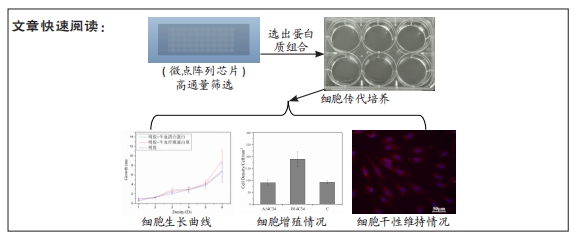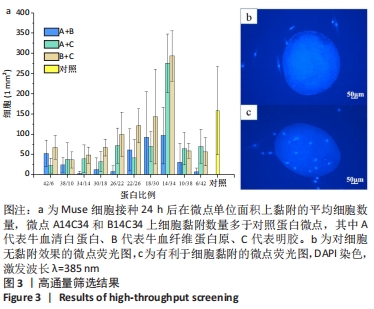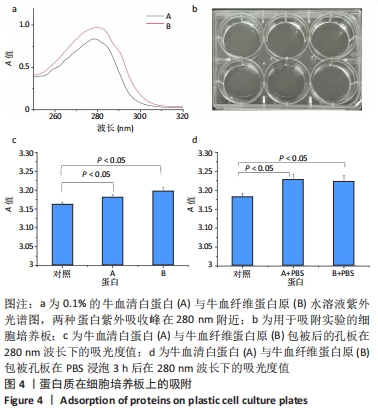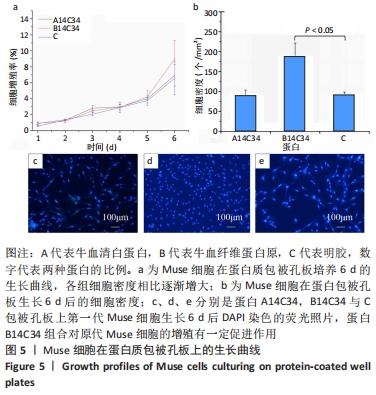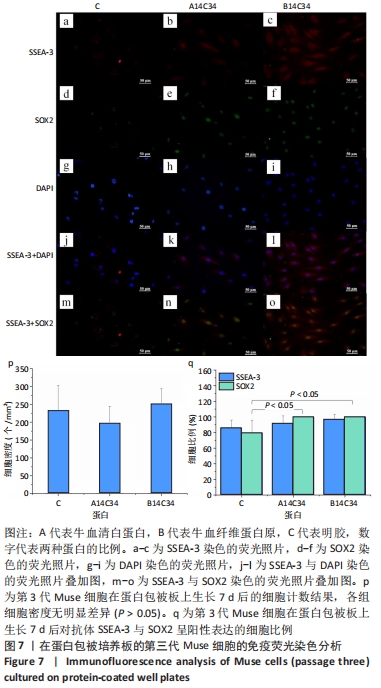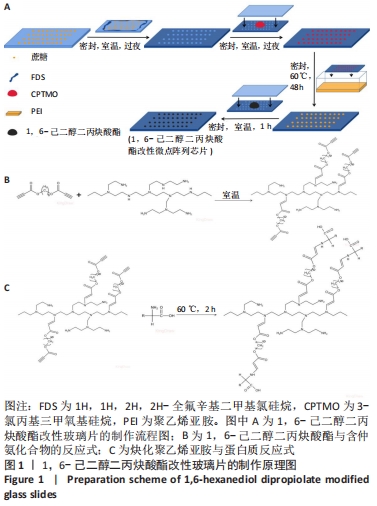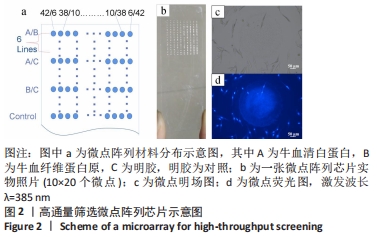[1] NUTTELMAN CR, BENOIT DSW, TRIPODI MC, et al.The effect of ethylene glycol methacrylate phosphate in PEG hydrogels on mineralization and viability of encapsulated hMSCs. Biomaterials. 2006;27(8):1377-1386.
[2] SAHA K, POLLOCK JF, SCHAFFER DV, et al.Designing synthetic materials to control stem cell phenotype. Curr Opin Chem Biol. 2007;11(4):381-397.
[3] KURODA Y, KITADA M, WAKAO S, et al.Unique multipotent cells in adult human mesenchymal cell populations. Proc Natl Acad Sci USA. 2010;107(19):8639-8643.
[4] KURODA Y, KITADA M, WAKAO S, et al. Bone Marrow Mesenchymal Cells: How Do They Contribute to Tissue Repair and Are They Really Stem Cells? Arch Immunol Ther Exp. 2011;59(12)369-378.
[5] WAKAO S, AKASHI H, KUSHIDA Y, et al.Muse cells, newly found non-tumorigenic pluripotent stem cells, reside in human mesenchymal tissues. Pathol Int. 2014;64(1):1-9.
[6] KINOSHITA K, KUNO S, ISHIMINE H, et al.Therapeutic Potential of Adipose-Derived SSEA-3-Positive Muse Cells for Treating Diabetic Skin Ulcers. Stem Cell Transl Med. 2015;4(12)428-439.
[7] WAKAO S, KITADA M, KURODA Y, et al. Multilineage-differentiating stress-enduring (Muse) cells are a primary source of induced pluripotent stem cells in human fibroblasts. Proc Natl Acad Sci USA. 2011;108(24):9875-9880.
[8] ERIKO T, MASATO S, TAKUMI T, et al. Multilineage-Differentiating stress-enduring (Muse)-Like cells exist in synovial tissue. Regen Ther. 2019;10:17-26.
[9] 冷子宽,高正超,贺西京,等.人脐带来源Muse细胞培养、筛选、鉴定及其移植治疗大鼠脊髓损伤[J].中国骨伤,2019,32(4):327-34.
[10] KURODA S, KOH M, HORI E, et al. Muse Cell: A New Paradigm for Cell Therapy and Regenerative Homeostasis in Ischemic Stroke. Adv Exp Med Biol. 2018;1103:187-198.
[11] 王学成,马萌,吴煜琪,等.人Muse细胞体外诱导为神经前体细胞的研究[J].中国生物医学工程学报,2016,35(2):218-24.
[12] SQUILLARO T, ALESSIO N, DI B, et al. Stem Cells and DNA Repair Capacity: Muse Stem Cells Are Among the Best Performers. Adv Exp Med Biol. 2018;1103:103-113.
[13] WAKAO S, KITADA M, KURODA Y, et al. Isolation of adult human pluripotent stem cells from mesenchymal cell populations and their application to liver damages. Method Cell Biol. 2012;826:89-102.
[14] MINATOGUCHI S, ANDO T, TANAKA T, et al. Cardiac Rehabilitation With Dynamic Exercise Increases the Number of Muse Cells in the Peripheral Blood of Patients With Heart Disease. Circu Rep. 2018;1(1):17-19.
[15] LIU Q, ZHANG RZ, LI D, et al. Muse Cells, a New Type of Pluripotent Stem Cell Derived from Human Fibroblasts. Cell Reprogram. 2016; 18(2):67-77.
[16] 廖思达,孟昊业,李俊康,等.电喷雾法制备海藻酸盐-明胶-脂肪干细胞微球及其修复关节软骨损伤的可行性[J].中国组织工程研究,2021,25(28):4473-4479.
[17] LI Y, POWELL S, BRUNETTE E, et al. Expansion of human embryonic stem cells in defined serum-free medium devoid of animal-derived products. Biotechnol Bioeng. 2005;91(6):688-698.
[18] BRAAM S, ZEINSTRA L, LITJENS S, et al. Recombinant Vitronectin Is a Functionally Defined Substrate That Supports Human Embryonic Stem Cell Self-Renewal via αVβ5 Integrin. Stem Cells (Dayton, Ohio). 2008;26:2257-2265.
[19] 廖小豆,曹雅诗,艾思欣,等.基于人血清白蛋白占位的内标型比率荧光探针检测抗癫痫药物盐酸噻加宾[J].分析科学学报,2019, 35(6):797-803.
[20] 黄晓敏,向薇,吴伟琼.2型糖尿病患者下肢血管病变与血纤维蛋白原的关系[J].中国医药导报,2016,13(9):100-103.
[21] 李松彦,崔健,朱燕雯,等.吸附活性艳蓝染料的共聚合物的高通量筛选及其吸附性能的研究[J].化工新型材料,2018,46(4):152-156.
[22] 张莉,张海霞,任德成,等.高通量药物筛选生物活性分析技术研究进展[J].基础医学与临床,2001,21(4):306-309.
[23] 徐志红,蒋志胜.药物筛选新方法—高通量筛选[J].生物学通报, 2003,38(3):7-9.
[24] ZHAO H, SHA J, WU T, et al. Spatial Modulation of Biomolecules Immobilization by Fabrication of Hierarchically Structured PEG-Derived Brush Micropatterns: An Versatile Cellular Microarray Platform. Appl Surf Sci. 2020;529:147056.
[25] HANSEN A, MJOSENG H, ZHANG R, et al. High-Density Polymer Microarrays: Identifying Synthetic Polymers that Control Human Embryonic Stem Cell Growth. Adv Healthc Mater. 2014; 3:848-853.
[26] ANDERSON DG, PUTNAM D, LAVIK EB, et al. Biomaterial microarrays: rapid, microscale screening of polymer–cell interaction. Biomaterials. 2005;26(23):4892-4897.
[27] WANG L, XIAO L, ZHANG RZ, et al. Effects of acrylate/acrylamide polymers on the adhesion, growth and differentiation of Muse cells. Biomed Mater. 2019;14(1):015003.
[28] 邱林子,王桂容,潘艳,等.用于人类脂肪干细胞的纯化和体外长期培养的聚合物涂层[J].高等学校化学学报,2017,38(10):1897-1905.
[29] HE B, SU H, BAI T, et al. Spontaneous Amino-Yne Click Polymerization: A Powerful Tool toward Regio-and Stereo-specific Poly(β-aminoacrylates). J Am Chem Soc. 2017;139:5437-5443.
[30] DUFFY CRE, ZHANG R, HOW E, et al. Long term mesenchymal stem cell culture on a defined synthetic substrate with enzyme free passaging. Biomaterials. 2014;35(23):5998-6005.
|
